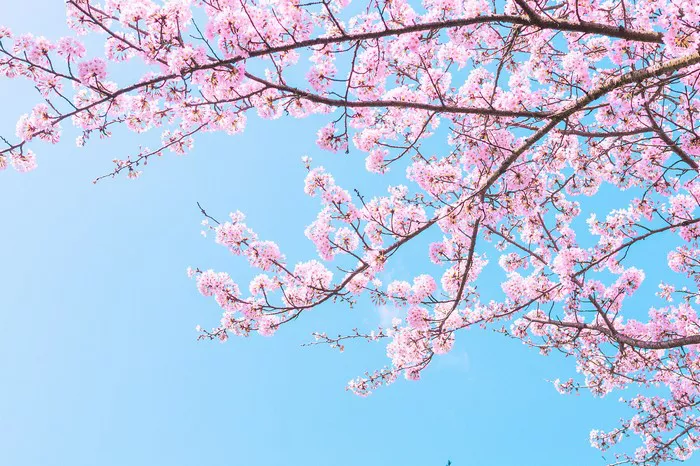Flowers have long held a profound significance in human culture, often serving as symbols of various emotions, events, and concepts. Among these symbolic meanings, the theme of rebirth stands out prominently. Across different cultures and traditions, certain flowers have been associated with the idea of renewal, transformation, and new beginnings. In this article, we delve into the world of flowers representing rebirth, examining their cultural significance, myths, and practical applications.
Flowers Representing Rebirth
1. Daffodils: As the heralds of spring, daffodils (Narcissus) symbolize new beginnings and the arrival of a season filled with hope and rejuvenation. Their vibrant yellow blooms are often seen as a sign of optimism and growth after the cold, dark days of winter.
2. Lotus: In many Eastern cultures, particularly in Hinduism and Buddhism, the lotus flower holds profound symbolism. Rising from muddy waters to bloom into a pristine flower, the lotus represents purity, enlightenment, and rebirth. Its ability to emerge untouched from murky depths is seen as a metaphor for spiritual growth and transformation.
3. Iris: With its striking, colorful petals, the iris has been associated with various meanings throughout history. In the context of rebirth, it symbolizes hope, faith, and wisdom. Its resilience in adverse conditions and its ability to thrive in diverse environments make it a fitting emblem of renewal and regeneration.
4. Jonquils: These delicate flowers, a type of narcissus, are often linked with the themes of renewal, rebirth, and the return of happiness. Their cheerful blooms and sweet fragrance evoke feelings of joy and optimism, making them popular choices for celebrations and occasions symbolizing new beginnings.
5. Crocus: As one of the first flowers to emerge after the winter frost, crocuses are heralds of spring and symbols of renewal. Their vibrant purple, white, and yellow blossoms bring a sense of freshness and vitality to the landscape, signaling the end of dormancy and the start of a new growing season.
6. Cherry Blossoms: In Japanese culture, the fleeting beauty of cherry blossoms holds deep significance. Known as “sakura,” these delicate flowers symbolize renewal, the ephemeral nature of life, and the beauty of impermanence. Their brief but spectacular blooming period is celebrated through hanami, the tradition of appreciating cherry blossoms during springtime.
Symbolism and Cultural Significance
The association of these flowers with rebirth is deeply rooted in cultural and historical contexts, as well as in myths and legends. In ancient civilizations, such as those of the Egyptians, Greeks, and Romans, flowers played a central role in religious rituals and ceremonies symbolizing regeneration and the cycle of life.
For instance, the lotus holds immense significance in Hindu and Buddhist traditions, where it is often depicted as emerging from the navel of Vishnu or the waters of creation. Its unfolding petals symbolize spiritual awakening and the journey towards enlightenment.
Similarly, the iris has been revered by various cultures throughout history. In Greek mythology, Iris was the messenger of the gods, bridging the gap between the divine and mortal realms. The flower named after her became associated with communication, guidance, and the passage between life and death.
Jonquils, with their cheerful demeanor and fragrant blooms, have been cherished as symbols of renewal and happiness in folklore and literature. In Victorian times, they were often exchanged as tokens of affection and used to convey messages of hope and optimism.
Crocuses, with their ability to push through the snow and bloom amidst adversity, have been admired for their resilience and tenacity. They serve as reminders that even in the darkest of times, there is always the potential for new growth and transformation.
Cherry blossoms, with their fleeting beauty and ethereal charm, have inspired poets, artists, and philosophers for centuries. In Japanese culture, they are revered as symbols of renewal, the transience of life, and the beauty of impermanence. The tradition of hanami, or flower viewing, is a testament to the profound impact these blossoms have on society.
Practical Applications
The symbolism of these flowers extends beyond cultural and historical contexts, finding practical applications in various aspects of everyday life.
1. Gifts for Specific Occasions: Flowers symbolizing rebirth make thoughtful gifts for occasions such as recovery from illness or surgery, graduation, starting a new job, or embarking on a new chapter in life. Daffodils, with their cheerful blooms, can uplift the spirits of those going through challenging times, while lotus flowers can convey wishes for enlightenment and inner growth.
2. Decorations for Themed Events or Ceremonies: Incorporating these flowers into decorations for themed events or ceremonies can add layers of meaning and symbolism. For instance, iris flowers can adorn a graduation ceremony, symbolizing the wisdom and knowledge gained through academic achievement. Cherry blossoms can create a serene and elegant atmosphere for weddings, symbolizing the beginning of a new life together.
3. Personal Use for Inspiration and Reflection: Individuals can also incorporate these flowers into their personal spaces for inspiration and reflection. A bouquet of jonquils on a desk can serve as a reminder of the potential for renewal and happiness, while a lotus flower in a meditation space can symbolize the journey towards inner peace and enlightenment.
Conclusion
In conclusion, flowers symbolizing rebirth offer a rich tapestry of cultural significance, myths, and practical applications. Whether used as gifts for special occasions, decorations for ceremonies, or personal reflections on growth and transformation, these flowers serve as timeless reminders of the cyclical nature of life and the enduring power of renewal.


